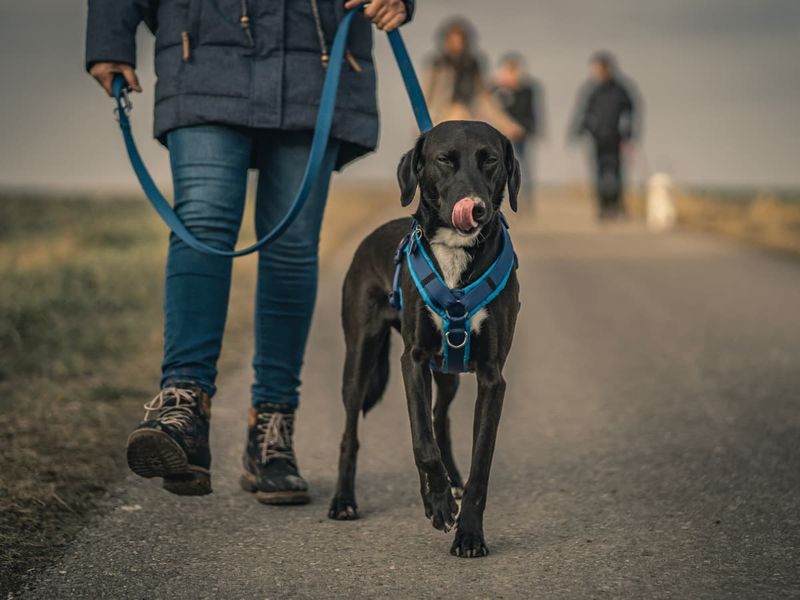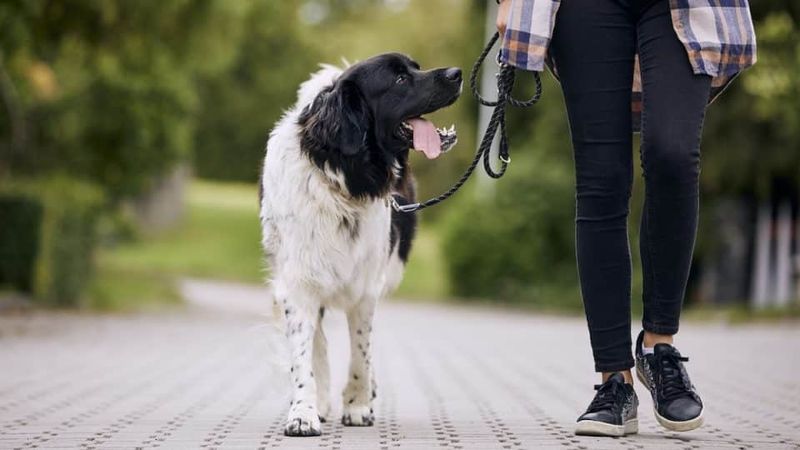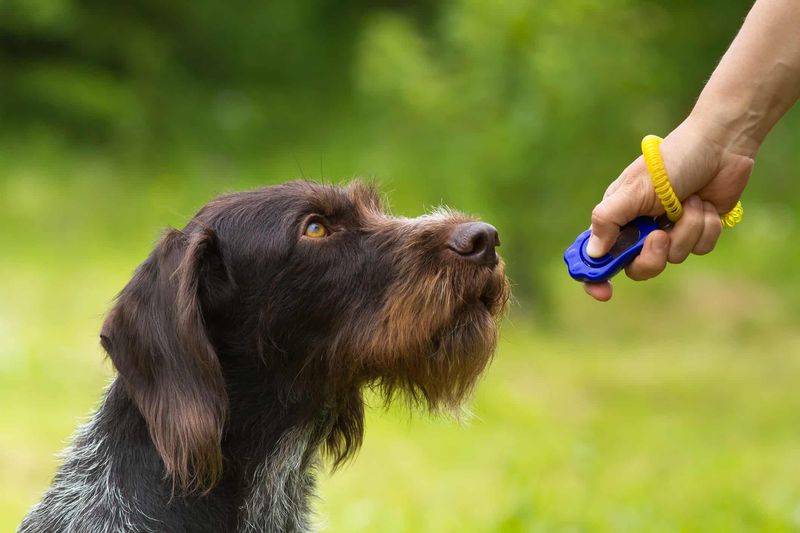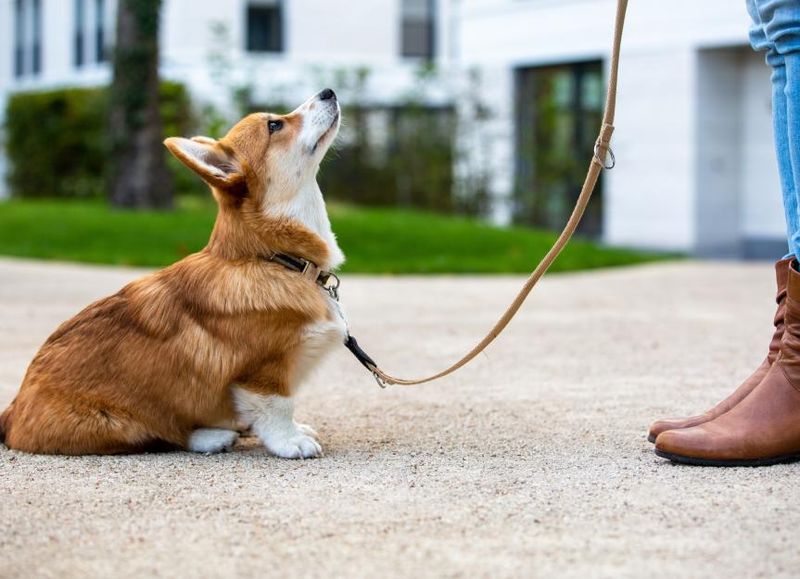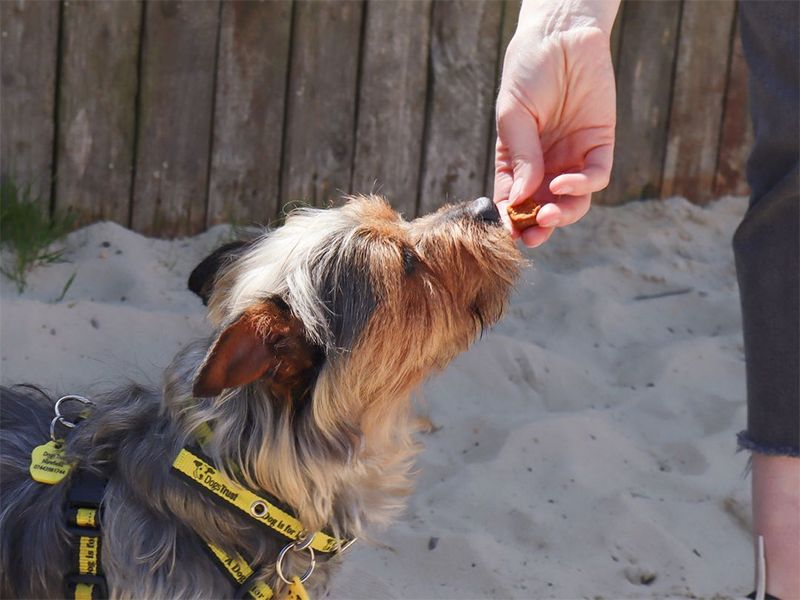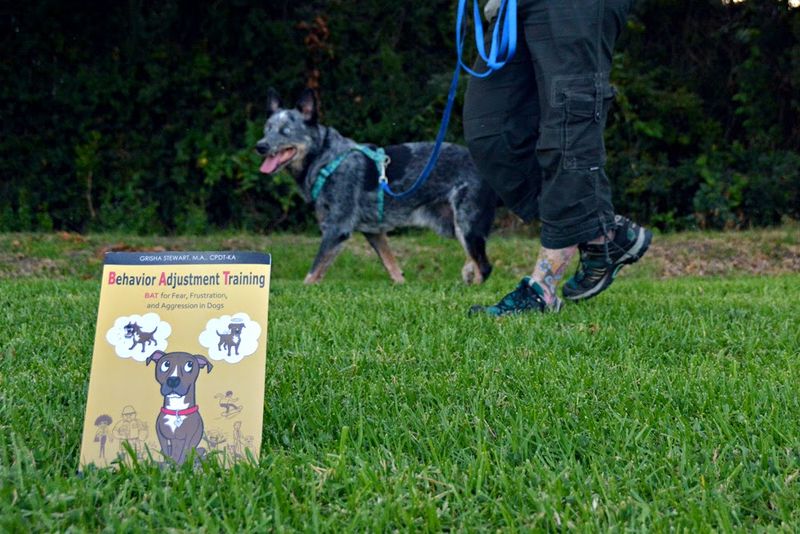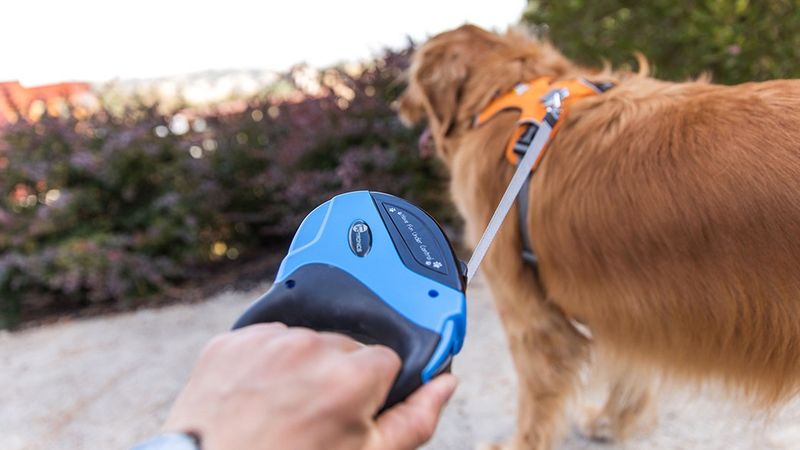Leash pulling can transform even the most delightful walk into a struggle for both dogs and owners. Fortunately, there are effective strategies and tools available to address this common issue. From training techniques to helpful gadgets, these smart solutions aim to make walking your dog an enjoyable experience once again. Here are 13 innovative ways to tackle leash pulling and create a harmonious stroll with your furry friend.
Head Halter
A head halter might look like a muzzle, but it’s a gentle tool for redirecting your dog’s pulling. Think of it as steering for your dog; when they pull, their head turns, discouraging the behavior. Used correctly, it can transform walks, creating a serene experience for both dog and owner. Ensure you introduce the halter slowly, rewarding your dog for calm behavior. Always follow the manufacturer’s instructions for a proper fit, and never jerk on the leash, as the neck is a sensitive area. With patience and consistency, the head halter can become an invaluable tool.
Front-Clip Harness
Front-clip harnesses are designed to address pulling by changing the point of contact. By attaching the leash at the front, when your dog pulls, they’re gently turned back towards you. This redirection helps in teaching them that pulling won’t get them forward. It’s a simple shift in leverage that makes a big difference. These harnesses are especially useful for dogs with a strong pull, offering control without discomfort. Made from a variety of materials, there are options for every size and breed. Always ensure a snug fit to avoid chafing or slipping.
Loose Leash Training
Loose leash training is about teaching your dog to walk beside you without pulling. Start in a distraction-free environment and reward your dog for walking at your side. If they pull, stop immediately and wait for them to return to your side before moving on. Consistency is key, and patience is your best friend. Over time, your dog will learn that staying close is rewarding. This technique strengthens your bond and provides a peaceful walking experience. Loose leash walking takes time and dedication but yields a lifetime of enjoyable walks.
No-Pull Harness
The no-pull harness is a game-changer for those struggling with pulling. Unlike traditional harnesses, it’s designed to apply gentle pressure on the dog’s body when they pull, discouraging the behavior. Available in various sizes and designs, it’s important to find the right fit for your pet. These harnesses provide an effective and humane solution, ensuring your dog’s comfort while promoting better walking manners. Regular use, combined with positive reinforcement, can lead to significant improvements in your dog’s leash behavior. It’s a non-invasive way to guide your dog towards better habits.
Clicker Training
Clicker training is a positive reinforcement method that encourages desired behaviors. Using a clicker, a small device that makes a distinctive sound, you can mark the moment your dog behaves well, such as walking without pulling. Pair each click with a treat or praise to reinforce the action. This training enhances communication, making it clear what behavior you want to see. Over time, your dog will associate the sound with positive outcomes, leading to improved leash manners. It’s a fun and engaging way to train, fostering a closer relationship between you and your pet.
Shorter Leash
Using a shorter leash provides more control during walks, minimizing your dog’s ability to gain momentum for pulling. It keeps your dog closer, allowing for easier corrections and guidance. A shorter leash doesn’t mean a lack of freedom; it’s about a more controlled and connected experience. These leashes are especially useful in busy or crowded areas, where distractions are plenty. By maintaining proximity, you can better communicate with your dog, reinforcing good behavior. Choose a sturdy leash that’s comfortable for both you and your pet to hold.
Gentle Leader
The gentle leader is akin to a head halter, focusing on guiding your dog without force. It gives you control over your dog’s head, and subsequently their entire body, minimizing pulling behavior. As with any tool, proper introduction is crucial. Acclimate your dog to the gentle leader by allowing them to wear it indoors first, rewarding calm behavior. It’s a humane way to address pulling, offering both control and comfort. Many owners find it transforms their walking experience, turning what once was a struggle into a pleasant outing.
Reward-Based Training
Reward-based training focuses on positive reinforcement, using treats or praise to encourage good behavior. Begin by rewarding your dog for walking at your side, gradually reducing treats as the behavior becomes natural. This method emphasizes patience and consistency. Over time, your dog will associate the desired behavior with positive outcomes, reducing the tendency to pull. This approach not only improves leash manners but also strengthens the bond between you and your pet. It’s a rewarding journey, turning challenges into opportunities for growth and connection.
Halti Harness
The Halti harness is specifically designed to stop pulling by using a dual-leash system. This innovative design allows for greater control, as it connects at both the chest and back. It effectively guides your dog’s movement, making it harder to pull forward. The Halti harness is versatile, suitable for various breeds and sizes. It’s important to fit the harness correctly, ensuring comfort and effectiveness. Regular use, combined with positive encouragement, can transform your walks from a tug-of-war into a harmonious stroll. It’s a practical tool for persistent pullers.
Behavior Adjustment Training
Behavior Adjustment Training (BAT) focuses on changing the emotional response that leads to pulling. By gradually exposing your dog to triggers at a distance they can handle, and rewarding calm behavior, you can alter their mindset. This method reduces anxiety and improves leash manners over time. BAT requires patience and a keen understanding of your dog’s body language. It’s a less conventional approach but offers profound results for dogs struggling with reactivity. Implemented correctly, BAT can turn the chaos of a pulling dog into a composed walking partner.
Tug Toy Distraction
Incorporating a tug toy during walks can divert your dog’s attention from pulling. Choose a durable toy that your dog loves, and use it as a reward for walking beside you. This method channels their energy into play, rather than pulling. It’s an engaging way to reinforce good behavior, especially for high-energy dogs. However, balance is crucial; ensure that playtime doesn’t overshadow the walk itself. Use the toy strategically, rewarding calm walking with short play sessions. This approach transforms the walk into an interactive and enjoyable experience for both parties.
Adjustable Leash
An adjustable leash offers versatility, allowing you to modify the length based on the environment. In crowded areas, shorten it for control; in open spaces, extend it for a bit more freedom. This flexibility helps manage pulling by adapting to different situations easily. It’s essential to choose a high-quality leash with reliable locking mechanisms to ensure safety. Adjustable leashes bring a balance of control and comfort, making walks more manageable for both the owner and the dog. They offer an adaptable solution for various walking scenarios, promoting better leash behavior.
Obedience Classes
Enrolling your dog in obedience classes provides structured training to curb pulling. Professional trainers offer guidance, teaching dogs and owners techniques to improve walking manners. Classes foster socialization, reducing distractions and anxiety during walks. The structured environment reinforces discipline and encourages learning through consistent practice. Dogs benefit from the stimulation, and owners gain confidence in handling leash challenges. Obedience classes are a long-term investment in your dog’s behavior, offering tools and knowledge to transform walks into peaceful and enjoyable outings. It’s a community-based solution with lasting impacts.


